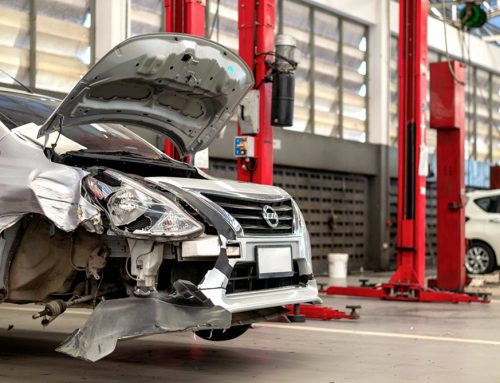Today, as part of Capacity Month 2025, we’re taking a closer look at a topic that’s become part of our everyday lives: artificial intelligence.
A few years ago, we saw attempts to create auto estimating apps that could support operations. Fast-forward to today, and AI is now built into tools that can practically automate the paint booth. It feels like the future is now.
This year, I also saw estimators using general-purpose AI, like ChatGPT, to help with their work. At first, it surprised me a bit, but it also got me thinking.
I don’t think it’s a bad idea. Good estimators are rare, so speeding up their work is always a win. Average estimators are legion, so having a second set of eyes from a machine might not be a bad thing.
In any case, did you know that the estimator’s role in your shop is not to assess vehicle damage?
The Real Role of an Estimator in a Collision Shop
The estimator’s role is to be a revenue generator. How? Sure, they estimate repairs, but if they’re efficient, they also reduce production interruptions by providing reliable estimates that won’t leave your techs with surprises. That means the estimator’s work helps increase your capacity and your margins.
Estimators also keep up to date with manufacturer guidelines and don’t hesitate to look up procedures to ensure that:
- Your repairs comply with standards, and
- You capture the maximum revenue for each job, which boosts your business volume and your margins.
Finally, estimators are responsible for good upselling and cross-selling. My friend Pierre Lévesque from VitrXpert would tell you never to miss the chance to offer a glass repair—it’s easy money! But there’s more: fixing prior damage, adding a blend if it’s not included for an insured job, and any other opportunity you can spot. The customer is right in front of you. The opportunity is bigger than just their claim.
So, supporting your estimator with a machine so they can focus on their role as a revenue generator is pretty appealing, especially if it also keeps you from hiring a second one.
Beware of the Pitfalls!
Using ChatGPT (or any other general AI tool) comes with some pitfalls. The first one is uploading files that contain personal data. That’s a huge no. Files shared with the machine must be reviewed to exclude any personal information that could identify companies, individuals, or vehicles.
Second pitfall: AI isn’t perfect, so don’t take its answers as gospel. You need to be smarter than the machine. After all, it learns with you.
And the third pitfall, the one that threatens humanity: getting lazy and letting our key skills atrophy. It’s okay to let the machine handle certain tasks, but not at the cost of promoting incompetence.
That said, automation and artificial intelligence do have advantages, notably when it comes to increasing the volume of work an estimator can handle and supporting them so they can add more value to their role.
Some Prompts to Get You Started
I know you’re busy and your time is precious, so I’ll wrap up with a practical little gift: some prompts to help you use this tool if you’d like to. I started with a prompt an estimator shared with me and used AI to build the other two. It just goes to show that everything’s connected!
- Here’s my estimate (attached). Analyze it and tell me which operations or parts are usually associated with this type of damage that I might have missed, based on best practices and OEM requirements.
- Here’s my estimate (attached). Check the technical logic: do the listed operations make sense together? Are there any missing or redundant tasks based on the damage described?
- Here’s my estimate (attached). Identify any legitimate opportunities to add operations or services I might have overlooked, such as repairable prior damage, mandatory manufacturer procedures, or realistic related labour times.
And if you know other useful prompts, share them with me at arocheleau@progi.com.
Please note that we’re not endorsing any specific tool or even saying you should use one. You need to be critical. ChatGPT was used for this text because it’s universally known. Our only recommendation today: don’t ignore innovation. Because if you do, it will still find its way into your business—on its own terms.
In the meantime, if you want to manage your shop’s capacity like a pro this winter, take a look at ProgiPlanning.
Article by Alexandre Rocheleau





